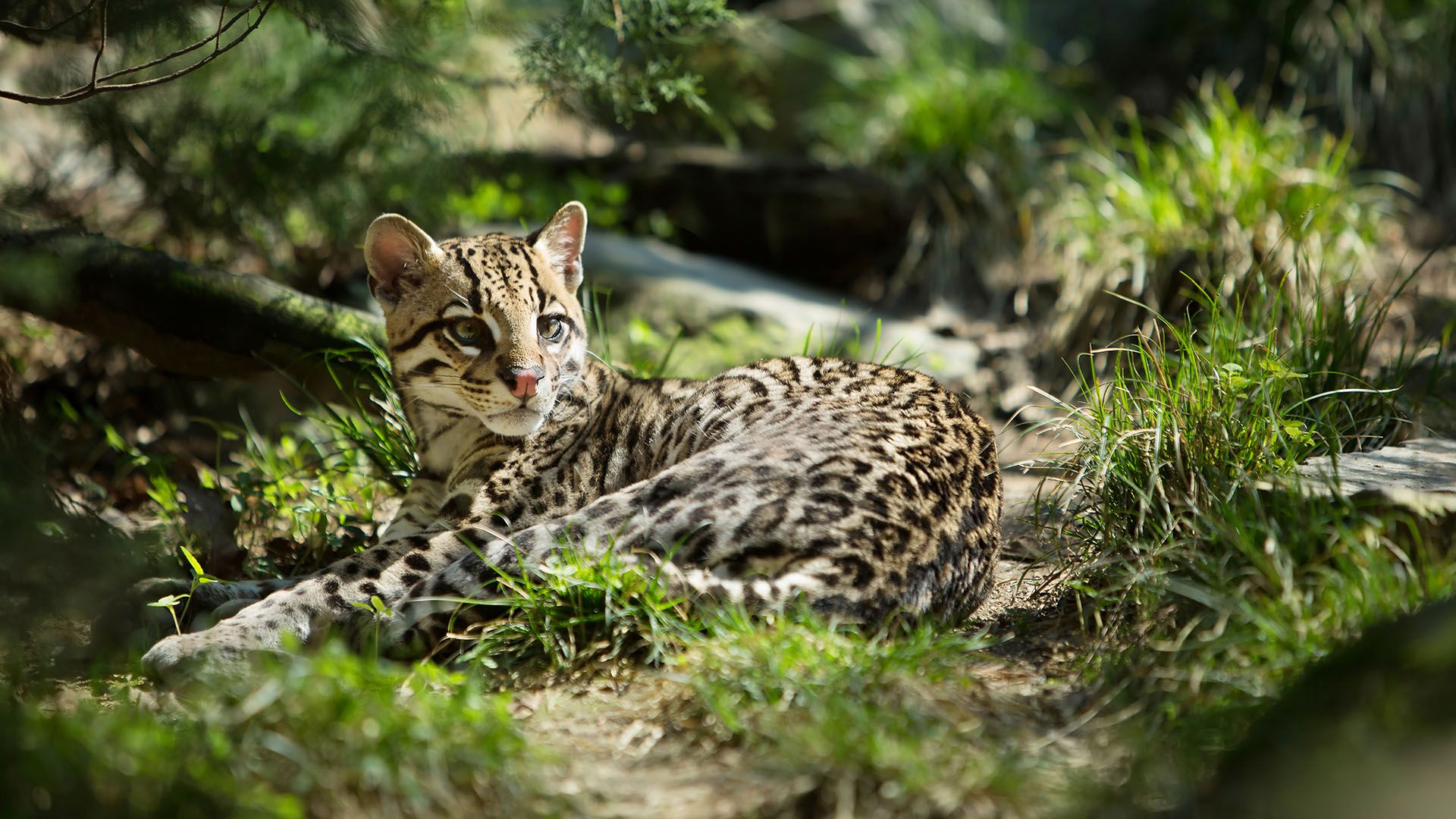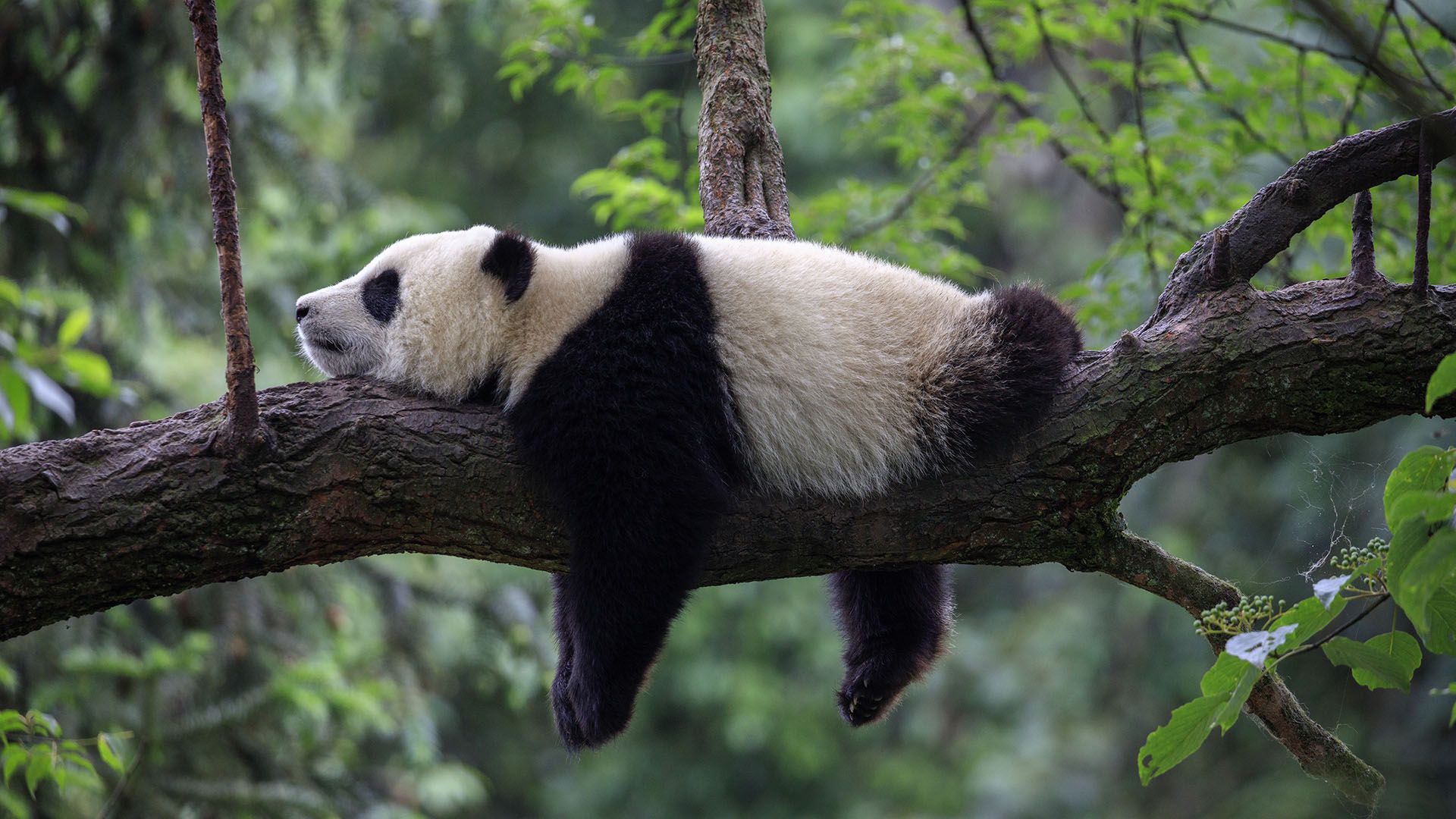- Wildlife
- USA
- Canada
- England
- Kenya
- South Africa
- China
- Russia
- Guinea
- Costa Rica
- Botswana
- Food & Drink
- Uzbekistan
Planning your own trip? Prepare for your trip
Use Rough Guides' trusted partners for great rates
Book your individual trip, stress-free with local travel experts
Put aside images of Hugh Jackman in X Men: a wolverine is the largest member of the weasel family, though it looks more like a small bear. Most notable about wolverines is their strength – far greater than expected for an animal of its size – and though they can be found in considerable numbers in northern Canada, Alaska and Scandinavia, their prized fur has over the years made them a prime target for hunters.

Wolverine © AB Photographie/Shutterstock
Though once common throughout the Maasai Mara, the African wild dog is now one of the most endangered mammals in the world, with less than 5500 thought to remain in the wild. Concerted conservation efforts have meant that there are now more than three hundred of these large canines living on the Laikipia plateau in Kenya, though the vastness of the area and their excellent camouflage against the savanna plains ensures that a sighting remains tricky.
Looking for the best time for wildlife spotting? Our guide will help you choose the best time to visit Kenya and the best time for safari in Kenya. Experiencing difficulties with planning? Get travel ideas with our Kenya itineraries.

Scenic view of wild dogs (Lycaon Pictus) © paula french/Shutterstock
Essentially the same as the African lion in all but colour (caused by a recessive gene), white lions are indigenous to South Africa’s Timbavati region, in the northeast of the country. Removed from the wild because they were thought to be bad hunters, white lions were reintroduced to their natural habitat in 2009, though you’re unfortunately far more likely to see one in a zoo than you are in Timbavati.
One option for a hassle-free journey through South Africa is to choose one of our itineraries. Thoroughly researched by our local experts, not only do they contain a wealth of options for spending time in South Africa, but they also allow you to take your mind off travelling between your chosen destinations.

White lions family in South Africa © JONATHAN PLEDGER/Shutterstock
Despite being most closely related to horses and rhinoceroses, tapirs look more like pigs with their stocky, rounded shape, though their short trunk gives them something of a comical appearance. Generally living in forested areas in Central and South America and Asia (the Malayan tapir is especially distinctive for its white hindquarters), these shy, somewhat cumbersome herbivores are surprisingly agile swimmers and at their most graceful in the water.

© Arief Adhari/Shutterstock
Discover undefined's most captivating stories
These graceful, pale cats – smaller than other big cats – are perfectly adapted to their cold, inhospitable mountain home. Their thick fur and stocky build helps them to keep warm in the freezing temperatures, and their colouring ensures they’re perfectly hidden against their surroundings. Found from southern Siberia down through Uzbekistan, eastern Afghanistan, northern Pakistan and the highest altitudes of the Himalayas, the inaccessibility of these regions contributes to the rarity of sightings.

Snow leopard © Dennis W Donohue/Shutterstock
The world’s largest cat, the Siberian tiger’s solo lifestyle and camouflaging coat – not to mention the harshness of their environment – make them incredibly hard to spot in their natural habitat. Largely found in Russia’s Sikhote-Alin mountains, some 900km northeast of Vladivostok, there are only around five hundred of these striking animals left in the wild; unfortunately, the continued demand for tiger products means that these big cats remain endangered.

The Siberian Tiger, Panthera tigris tigris is running in the snow © Petr Simon/Shutterstock
Closely resembling a domestic cat in size, the ocelot’s striking leopard-like fur provides excellent camouflage in its rainforest home. Living extensively across South America – and as far north as Texas – they stalk monkeys and birds from up in the trees, using their sharp fangs to finish off their prey.

Ocelot © elitravo/Shutterstock
Closely related to – but smaller than – the ocelot, oncillas are found in Costa Rica and parts of South America, and are also known as the "tiger cat". Largely nocturnal, these undeniably cute wild cats are excellent climbers but live on the ground in tropical forests; they require meat for their survival, feeding on small mammals, birds and lizards.

Tiger Cat or Oncilla, leopardus tigrinus © slowmotiongli/Shutterstock
Only present in the UK during late spring and summer, the nocturnal nightjar has a mythical reputation for sucking milk from goats. Their dull, brown mottled colouring ensures that they stay well hidden during the day – the first sign that one is nearby is likely to be the male’s song, most commonly heard around dusk on quiet, warm summer evenings.

European Nightjar (Caprimulgus europaeus) © Vishnevskiy Vasily/Shutterstock
It’s hard to believe that an animal this size can be elusive, but these surprisingly shy, gentle giants can be incredibly tricky to find in the wild. Spotting a mountain gorilla – living in parts of Rwanda, Uganda and the Democratic Republic of Congo – involves long, often difficult, treks into the dense vegetation; though they are largely ground dwelling, the primates move around frequently which makes them difficult to track down.

Baby gorila inside Virunga national park, Rwanda © LMspencer/Shutterstock
Living in Canada’s British Columbia, the Kermode bear is a sub-species of the American black bear that is notable for their distinctive white fur. Their unusual colouring makes for the perfect camouflage when catching fish – as a result they’re more successful at doing so than their black-furred relatives. Uninhabited Princess Royal Island is home to the greatest density of the bears – though as one of the largest temperate rainforests in the world, your chances of spotting one are slim.

© NaturesMomentsuk/Shutterstock
The smallest of the baboon species, Guinea baboons live in groups of up to two hundred; highly communicative creatures, you’re far more likely to hear them than to see them. These reddish-brown baboons aren’t particularly speedy climbers, so they tend to stick to the treetops rather than risk the forest floor; they live in just a small area of West Africa, including (unsurprisingly) Guinea, as well as Gambia and Senegal.

Guinea Baboon (Papio papio) crossing the road © tony mills/Shutterstock
Undoubtedly one of the world’s most distinctive mammals, the giant panda is native to south central China, particularly Sichuan, and it’s thought that there are fewer that 1600 left in the wild. With a diet made up almost entirely of bamboo, they have to consume up to a whopping 38kg of the plant a day. Unfortunately, they’re so hard to spot that your best chance of seeing one is in a wildlife centre or zoo.

Giant panda sleeping on tre tree © clkraus/Shutterstock
Forget all images of the Big Bad Wolf of your childhood – in reality, grey wolves are surprisingly shy. Though once common throughout northern Europe and North America, wolves were brought close to extinction by the 1960s. Now, in pockets of the US – notably Yellowstone Park – they have been successfully reintroduced, in part to balance out the eco-system, but spotting them still requires some dedication and persistence.

A lone Timber wolf or Grey Wolf (Canis lupus) © Jim Cumming/Shutterstock
With just 440 pairs breeding in the UK, the golden eagle is one of the most striking but most difficult to spot birds in the country. These majestic animals, boasting a wingspan of over two metres, can be found – if you’re lucky – soaring over Scottish moorland and mountains. Spotting one requires a combination of luck, the right weather, and an understanding of the bird’s habitat – the Isle of Skye is arguably the best place to spot them.

Golden eagle © Vladimir Kogan Michael/Shutterstock
Not the separate species of cat its name suggests, black panthers are in fact leopards (in Africa and Asia) and jaguars (in the Americas), their colouring coming from excess melanin in their coats. As a result, they’re incredibly uncommon, and it’s very unlikely that you’d get to see one in the wild – Kenya, notably Mount Kenya and Aberdare National Park, is your best bet.

Black panther © davemhuntphotography/Shutterstock
It seems unlikely that the small, domestic-sized African black-footed cat should survive on the deserts of southern Africa that are home to much larger predators and yet, it does – the San people call it the "anthill lion" due to its courage. These solitary, nocturnal animals live under cover, making them notoriously difficult to spot, and they hunt small animals, including even bigger Cape hares.

Black Footed Cat, felis nigripes © slowmotiongli/Shutterstock
Despite feeling like a quintessential British animal, in the UK you’re more likely to see one of these nocturnal creatures as roadkill than alive. Considering that much of their lives are lived out underground – badger setts are composed of a network of tunnels that are handed down from generation to generation and can be centuries old – this is hardly surprising, though many of the bumps you’ll come across in UK woodland are the result of their excellent digging skills.

© colin robert varndell/Shutterstock
Native to sub-Saharan Africa, the aardvark is also known as the African antbear, in reference to its diet of ants and termites. Living in underground burrows, nocturnal and largely solitary, they’re not a major fixture on game-spotting safaris because they can be so hard to find. The name "aardvark" comes from early Afrikaans meaning "earth pig" – surprisingly, however, they’re more closely related to elephants than they are to pigs.
Start planning your trip to Namibia today with our Namibia itineraries.

Baby aardvark © Thomas Retterath/Shutterstock
Looking like something out of a science-fiction film, pangolin – also known as "scaly anteater" – are quite hard to believe on first sight. Found in both Africa and Asia, they are covered in hard, overlapping scales and roll themselves up into a ball when threatened, emitting a rather noxious smell. A combination of being nocturnal and prized for their meat – demand for which is unfortunately growing in Asia – makes them incredibly hard to see in the wild.

Pangolin searches ants © 2630ben/Shutterstock
written by
Rough Guides Editors
updated 03.06.2024
For over 40 years, Rough Guides has been a trusted name in travel, offering expert-curated guides, inspiring articles, and tailor-made trips. Our passionate team of writers and local travel specialists provide in-depth insights into destinations worldwide, from iconic landmarks to hidden gems. We help you travel smarter and experience the world authentically.
Use Rough Guides' trusted partners for great rates
Discover undefined's most captivating stories
Arrange your trip, hassle-free, with local travel experts
Arrange your trip with local travel experts